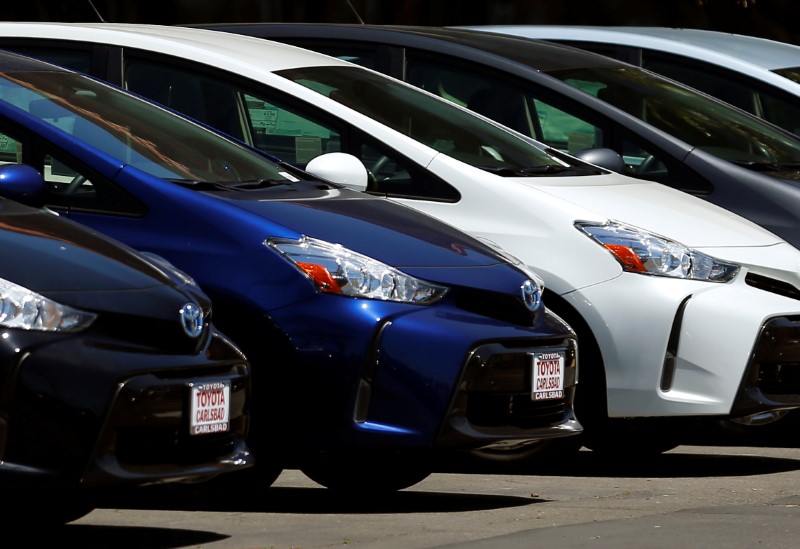By Bernie Woodall
DETROIT (Reuters) - Hefty discounts helped boost November U.S. auto sales 3.7 percent, automakers reported on Thursday, putting the industry within reach of the annual sales record set in 2015.
But some analysts worried that near-record high discounts, also called incentives, were artificially inflating demand to extend a sales boom that began after the 2008-09 economic crisis.
Auto shopping website and industry consultant TrueCar Inc (O:TRUE) said profit-eroding discounts rose 13 percent in November from a year earlier.
Bob Carter, senior vice president for Toyota Motor Corp’s (T:7203) U.S. sales arm, was upbeat nonetheless. “We have a very positive outlook on the U.S. economy over the next three years,” Carter told Reuters.
Annualized November U.S. sales were 17.87 million vehicles, down from 18.25 million a year earlier, industry consultant Autodata Corp said. Trucks and sport utility vehicles accounted for 59 percent of new vehicle sales in November, up from 55 percent a year earlier, Autodata said.
WardsAuto, which provides data used by the U.S. government for economic analysis, said annualized sales were 17.75 million vehicles, from 17.96 million in November 2015.
The two consultancies differ on the number of large trucks they include in the "light vehicle" sales figures they report.
Two more selling days last month made comparisons to year-ago sales easier to top, but the annualized sales rate was more difficult to match.
Each month, auto sales offer an early snapshot of U.S. consumer spending.
“All economic indicators show significantly improved optimism about the U.S. economy including consumer and business sentiment, which continue to drive a very healthy U.S. auto industry,” said Mustafa Mohatarem, General Motor Co's (N:GM) chief economist.
“We believe the U.S. auto industry is well-positioned for sales to continue at or near record levels into 2017.”
Brian Johnson of Barclays (LON:BARC) said an expected rise in interest rates and a tightening of easy credit may pressure sales in 2017. But he said a stronger economy may lead to "a continued plateau" for sales, rather than the "eroding plateau" Barclays now forecasts.
Robust November sales helped drive up automaker and auto dealer shares. Closing prices Thursday showed GM up 5.5 percent, Ford up 3.9 percent, and leading auto dealer group AutoNation Inc (N:AN) up 3.7 percent.
Market leader GM's sales rose 10.2 percent to 252,644 new vehicles in November.
GM reported lofty sales for its big SUVs and pickup trucks, which are higher priced than sedans and other passenger cars.
J.D. Power data provided to Reuters showed that GM spent big on those truck sales. Discounts rose to an average of $5,752 per truck sold at GM, up 46 percent from a year ago.
That compared with a rise of 5 percent to an average $4,467 at Ford, and a 19 percent increase to an average of $6,6062 per Ram truck sold by Fiat Chrysler Automobiles (MI:FCHA) (N:FCAU).
Those figures include heavy duty as well as the most prevalent trucks, which are the F-150 from Ford, the Silverado 1500 and Sierra 1500 at GM and the Ram 1500.
Ford U.S. sales chief Mark LaNeve said on a conference call that even though oil prices may be on the way to $60 per barrel after OPEC cut production quotas, consumers will still favor SUVs and pickup trucks.
Fiat Chrysler's sales ran counter to the trend, dropping 14 percent.
Toyota outsold Ford by fewer than 100 vehicles. Ford sales rose 5 percent, outpacing expectations, while Toyota matched estimates with a 4.3 percent gain over a year earlier.
Usually, Ford is No. 2 in U.S. sales.

Nissan Motor Co (T:7201) beat expectations with a 7.5 percent rise in U.S. sales to 115,136 vehicles. Honda Motor Co (T:7267) showed a sales rise of 6.5 percent.